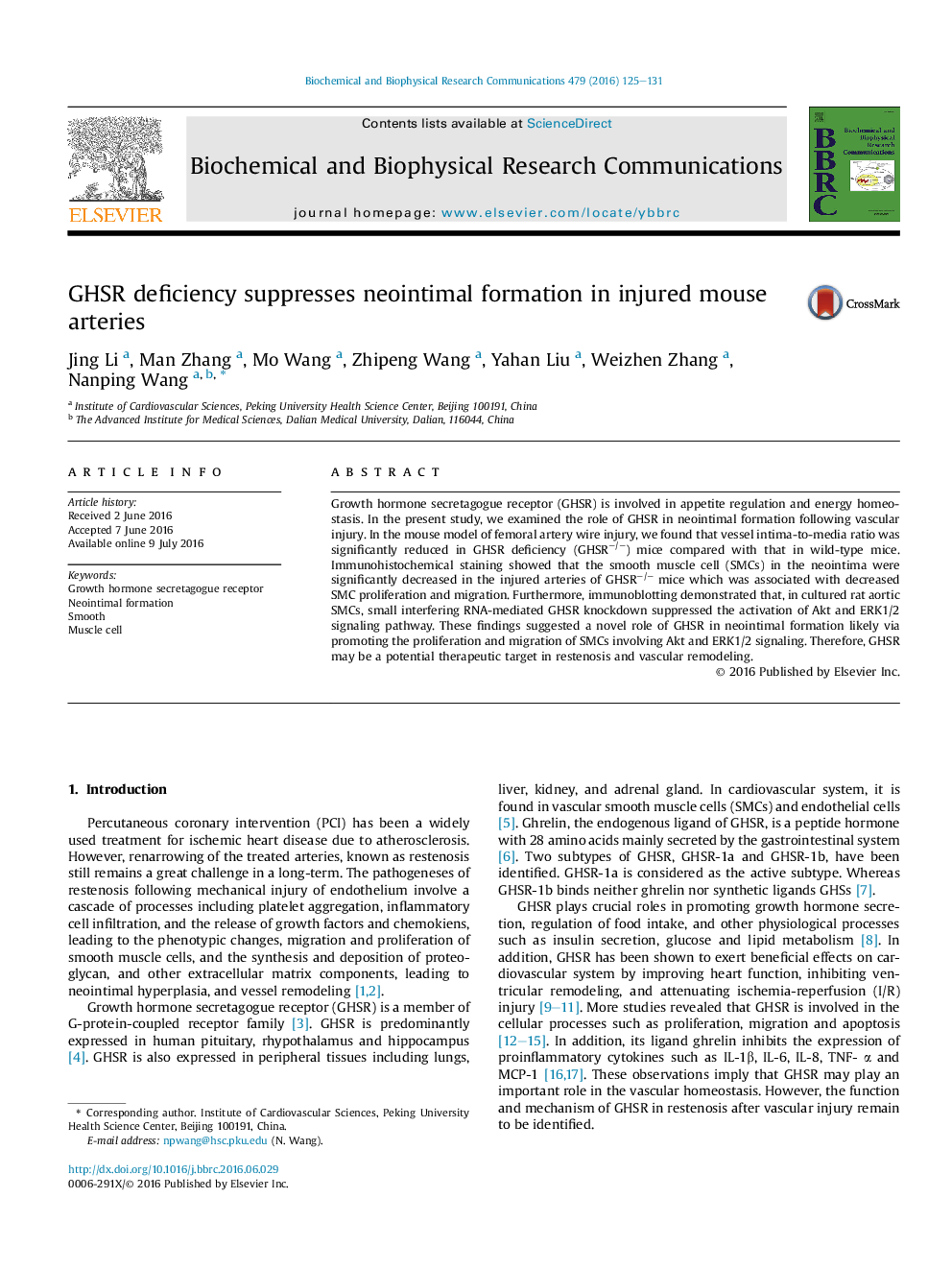| Article ID | Journal | Published Year | Pages | File Type |
|---|---|---|---|---|
| 5506913 | Biochemical and Biophysical Research Communications | 2016 | 7 Pages |
Abstract
Growth hormone secretagogue receptor (GHSR) is involved in appetite regulation and energy homeostasis. In the present study, we examined the role of GHSR in neointimal formation following vascular injury. In the mouse model of femoral artery wire injury, we found that vessel intima-to-media ratio was significantly reduced in GHSR deficiency (GHSRâ/â) mice compared with that in wild-type mice. Immunohistochemical staining showed that the smooth muscle cell (SMCs) in the neointima were significantly decreased in the injured arteries of GHSRâ/â mice which was associated with decreased SMC proliferation and migration. Furthermore, immunoblotting demonstrated that, in cultured rat aortic SMCs, small interfering RNA-mediated GHSR knockdown suppressed the activation of Akt and ERK1/2 signaling pathway. These findings suggested a novel role of GHSR in neointimal formation likely via promoting the proliferation and migration of SMCs involving Akt and ERK1/2 signaling. Therefore, GHSR may be a potential therapeutic target in restenosis and vascular remodeling.
Related Topics
Life Sciences
Biochemistry, Genetics and Molecular Biology
Biochemistry
Authors
Jing Li, Man Zhang, Mo Wang, Zhipeng Wang, Yahan Liu, Weizhen Zhang, Nanping Wang,
